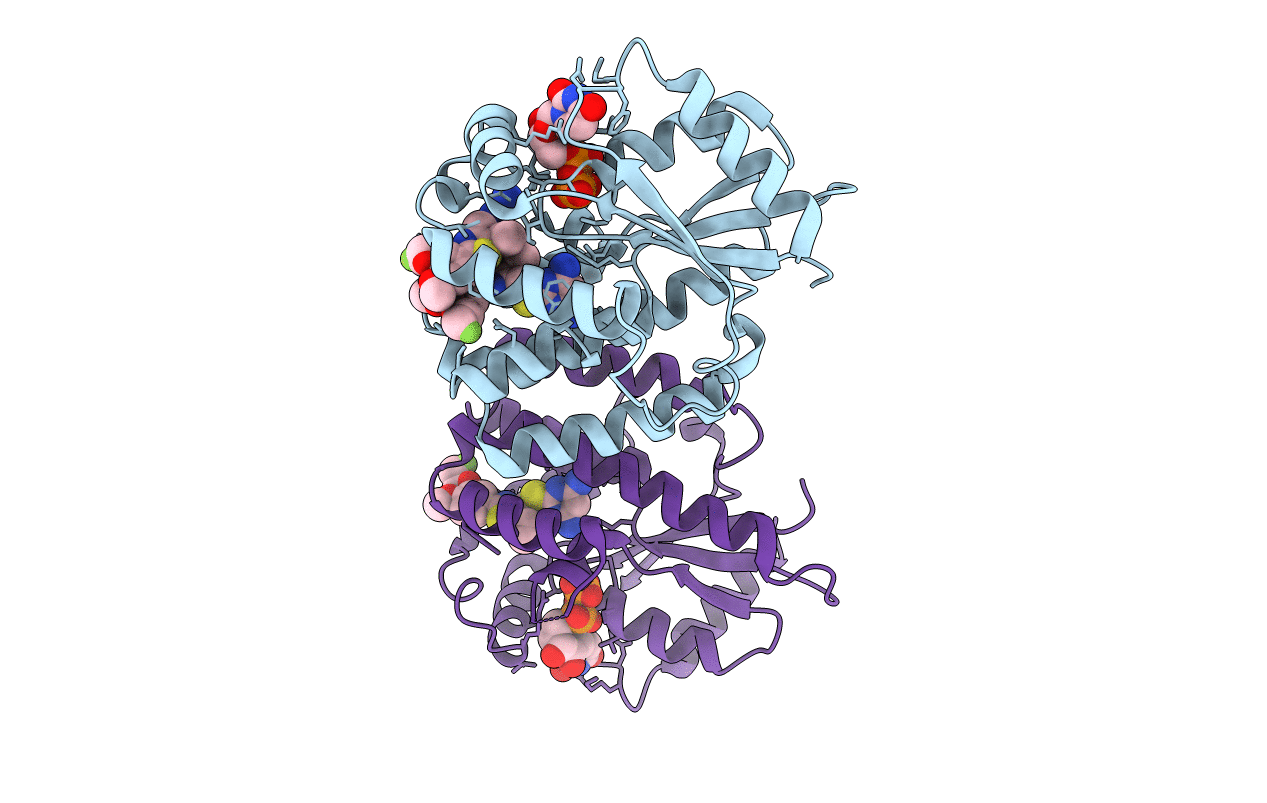
Deposition Date
2013-03-12
Release Date
2014-01-22
Last Version Date
2024-02-28
Entry Detail
PDB ID:
4JLM
Keywords:
Title:
Human dCK C4S-S74E mutant in complex with UDP and the F2.3.1 inhibitor (2-[({5-ETHYL-2-[3-(2-FLUOROETHOXY)-4-METHOXYPHENYL]-1,3-THIAZOL-4-YL}METHYL)SULFANYL]PYRIMIDINE-4,6-DIAMINE)
Biological Source:
Source Organism:
Homo sapiens (Taxon ID: 9606)
Host Organism:
Method Details:
Experimental Method:
Resolution:
2.18 Å
R-Value Free:
0.24
R-Value Work:
0.16
R-Value Observed:
0.17
Space Group:
P 41


